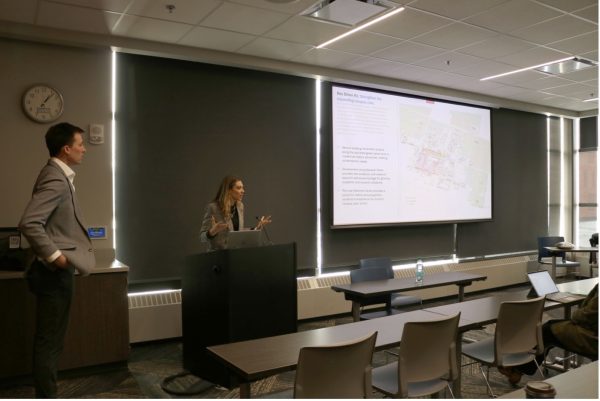Dairy Unit fire continues to affect production
September 27, 2022
The Dairy Research and Training Facility suffered from a fire early in the 2022 spring semester. Since then, the facility has nearly rebuilt or repaired everything besides a few small items.
According to officials representing the Dairy Research and Training Facility, the fire left behind around $500,000 worth of damage, which was fortunately covered by insurance. However, the fire’s impact continues to be felt, largely through decreased milk production.
“We reduced the herd by half,” Joseph Cassady, head of the Dairy and Food Science department, said. “We went from roughly 135 cows to 70.”
Cassady claims that this was done in order to safely house the cattle in their barn. Because of the damage, the facility has been able to only use the south half of the barn.
The reduced herd is the main reason that milk production has decreased, although Cassady admits that there also may have been minor drops in production due to stress. Economically, this has negatively impacted the dairy facility.
“When you reduce the number of cows by half and reduce the amount of milk, you also reduce maintenance costs,” Cassady said. “But, fixed costs like salaries and electricity remain.”
Many things remained the same after the fire. No one was fired from the facility, but less student workers were hired for the summer. Cassady also assures that the Davis Dairy Plant will receive enough milk to continue making its own dairy products, although the timing of milk deliveries has been altered.
Unfortunately, it won’t be able to sell as much to other companies that usually buy from the facility, such as Land O’ Lakes. Currently, officials at the facility are working on numbers in order to submit an insurance claim.
As the dairy facility looks to the future, it already has plans to rebuild its herd.
“We’re planning on purchasing 30 cows and internally build it from there to the original size,” Cassady said.
Cassady hopes to have the herd back to its original size by January. The original herd was comprised of mostly Holstein cattle, along with around 30 Brown Swiss.
As they prepare to buy new cattle, Cassady says there will be fewer Brown Swiss as they focus on rebuilding with Holsteins.
“It’s not because we don’t like Brown Swiss,” Cassady said. “The scientists prefer to work with Holsteins as they are the predominate breed in the industry.”
Cassady added on that additional breeds in the facility add on extra variables in research at the facility, which causes projects to become larger, more expensive, and more complicated.
Although the fire certainly left its negative effects on the facility, there were surprisingly a few perks to come out of the whole experience. These perks include a new roof, new pumping equipment, and other various new equipment.
“We’re at a better place than we were this time last year… although it’s not the route we would’ve chosen to take,” Cassady said.
The facility certainly would not have gotten through such a challenging year without its employees. Not only did the fire damage the unit, but the May derecho also left its mark.
“I’m very appreciative of the hard work and dedication of employees at the farm as they’ve worked through this challenging period,” Cassady said.
Cassady added that all damage from the fire and wind storm had been repaired.





















